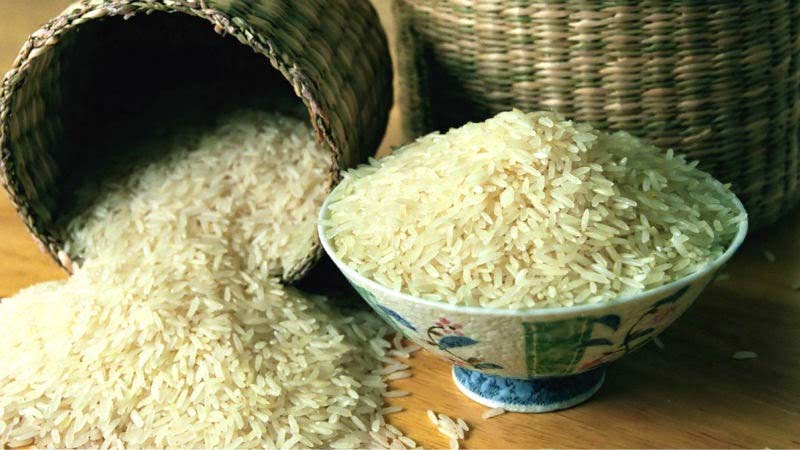If you walk into almost any provision shop or supermarket in Singapore and ask for chip seng, chances are the shopkeeper will know exactly what you mean. This recognition represents something more than mere brand awareness; it reflects decades of presence in a market where consumer loyalty must be earned meal by meal, grain by grain. Rice, after all, is not a product one experiments with casually. It anchors the diet, appears at nearly every meal, and carries expectations shaped by childhood memories and cultural tradition. In this context, the persistence of certain brands tells us something about how trust forms in markets where failure means not just disappointment but genuine disruption to daily life.
The Architecture of Brand Longevity
The chip seng brand occupies an interesting position in Singapore’s rice ecosystem. It has survived multiple generations of competition, weathered shifts in consumer preferences, and adapted to changing retail landscapes. This longevity is worth examining because it contradicts the common assumption that newer necessarily means better, or that heritage brands inevitably decline as markets modernise.
Consider what brand survival requires in Singapore’s rice market. The city-state imports virtually all its rice, making supply chain reliability essential. Prices fluctuate with international commodity markets, currency movements, and shipping costs. Consumer expectations have risen steadily as incomes have grown and exposure to global food cultures has expanded. Meanwhile, new competitors enter regularly, some backed by sophisticated marketing operations. Yet chip seng persists.
Product Range and Market Positioning
The brand encompasses several rice varieties, each targeted at different culinary needs and price sensitivities:
- Premium jasmine rice competing with Thai imports for quality-conscious consumers
- Standard long-grain varieties serving everyday household requirements
- Value-oriented options addressing budget considerations without abandoning quality
- Specialty selections catering to specific culinary applications
- Multiple package sizes from small household portions to commercial quantities
This diversification represents a practical response to market segmentation. Singapore’s population, though small in absolute numbers, displays remarkable diversity in purchasing behaviour, cooking traditions, and price sensitivity. A brand serving only one segment limits its growth potential and increases vulnerability to targeted competition.
The Quality Question
Quality in rice, it turns out, is both more complex and more subjective than one might assume. Scientific measures exist: grain uniformity, moisture content, broken grain percentage, foreign matter presence. These metrics matter, certainly. But they don’t fully explain why consumers choose one brand over another for decades.
Chip seng rice performs adequately across measurable quality parameters. The grains show reasonable uniformity. Breakage rates fall within acceptable ranges. Moisture content permits proper storage without premature deterioration. These are not trivial achievements; they require consistent sourcing, careful milling, and quality control throughout distribution.
Yet the more interesting quality dimension concerns cooking performance and eating experience. Does the rice cook predictably? Does it produce the texture Singaporean consumers expect? Does it complement rather than compete with accompanying dishes? Does it maintain acceptable quality across production batches? These questions matter more to actual consumers than laboratory measurements, and here chip seng has apparently succeeded in meeting expectations sufficiently often to maintain its market position.
Supply Chain Realities
Behind any rice brand operating in Singapore lies a supply chain of considerable complexity. The chip seng brand sources from multiple origins across Southeast Asia, primarily Thailand, Vietnam, and Cambodia. Each origin presents distinct advantages and challenges.
Thai jasmine rice commands premium prices but offers the aromatic qualities many consumers prize. Vietnamese rice provides reliable quality at competitive costs. Cambodian sources offer alternatives when other suppliers face difficulties. Managing these relationships, coordinating shipments, maintaining inventory buffers, and responding to price fluctuations demands capabilities that less sophisticated operations struggle to develop.
Singapore’s strategic rice stockpile programme, which maintains a six-month supply buffer, adds another layer to supply dynamics. This government intervention moderates price volatility and ensures availability during disruptions, creating a more stable environment for brands like chip seng to operate within.
Pricing Strategy and Value Perception
The brand pursues what might be termed a “sensible middle” pricing strategy. It costs more than the cheapest alternatives, signalling quality above bottom-tier offerings. Yet it undercuts premium brands, making it accessible to budget-conscious households. This positioning serves the large middle segment of Singapore’s market where most purchasing decisions occur.
Promotional activities supplement base pricing. Supermarkets feature chip seng regularly in their weekly specials. Bulk purchase options reward volume buyers. These tactics maintain competitive pressure whilst building purchase frequency. The strategy reflects understanding that in staple goods markets, small price advantages multiplied across frequent purchases create meaningful value perceptions.
Cultural Embedding and Consumer Behaviour
Perhaps the most interesting aspect of the chip seng brand concerns its embedding in Singaporean food culture. Multiple generations have grown up with it appearing in their kitchens. This familiarity breeds a particular kind of trust, one based not on dramatic quality superiority but on consistent adequacy.
For many consumers, particularly those who grew up in Singapore during earlier decades, chip seng represents not just rice but continuity with the past. The brand connects current meals to childhood memories, provides reassuring consistency in a rapidly changing city, and requires no research or experimentation. These psychological factors, whilst difficult to quantify, influence purchasing decisions substantially.
The Persistence of Familiar Brands
The continued market presence of chip seng illuminates broader patterns in how consumers navigate choices in essential goods markets. Innovation matters less for rice than for smartphones. Novelty attracts less than reliability. The familiar, if adequately performing, beats the unknown despite potentially superior alternatives. In Singapore’s sophisticated consumer market, where residents could easily access any rice brand globally, many continue choosing chip seng.




